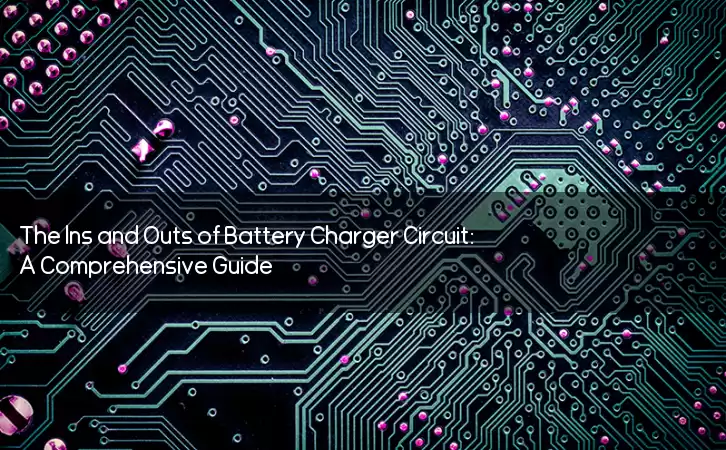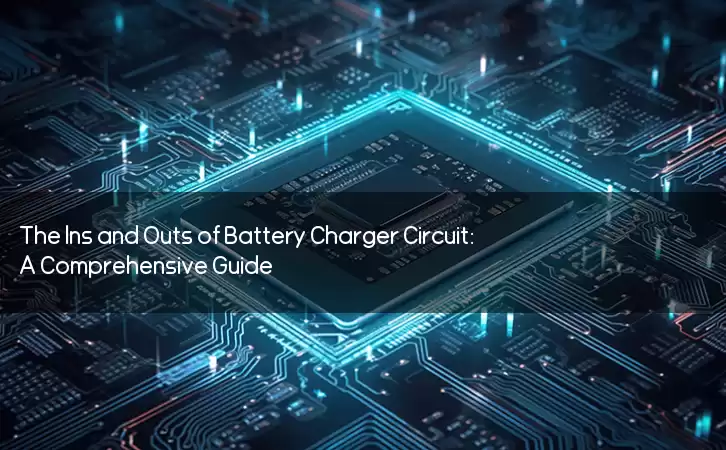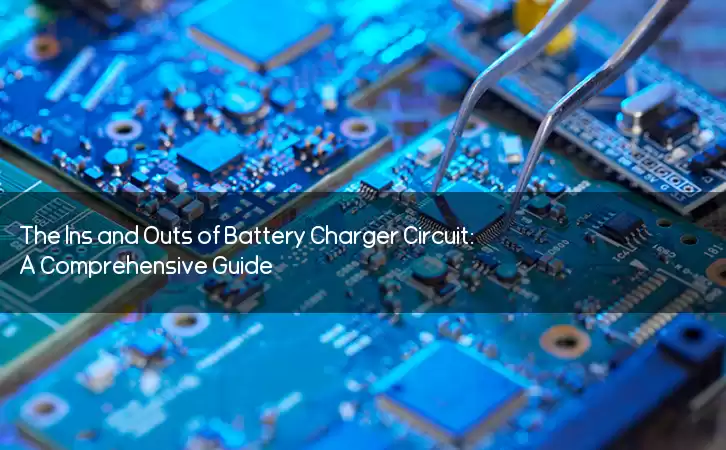Information Center
The Ins and Outs of Battery Charger Circuit: A Comprehensive Guide
Published:2023-07-21 20:33:01 Author:Green WCND Views:88Battery Charger Circuit: Explained in Detail

A battery charger circuit is an important device that is used to recharge batteries. It is designed to provide the necessary voltage and current to recharge the battery without causing any harm to its internal structure. This device is widely used in a variety of applications that require portable power, including mobile devices, electric vehicles, and renewable energy systems.

In this article, we will discuss the basics of a battery charger circuit and how it works. We will cover the different types of battery chargers available in the market, the components used in a battery charger circuit, and the principles of battery charging.

Types of Battery Chargers
There are many different types of battery chargers available in the market, each with its own features and benefits. Some of the common types of battery chargers are:
1. Linear Chargers: These chargers provide a constant current to the battery until it is fully charged. They are simple and cost-effective but are not very efficient.
2. Switching Chargers: These chargers are more efficient than linear chargers as they use a switching regulator to regulate the charging current. They can regulate the voltage and current to provide a precise charge to the battery.
3. Pulse Chargers: These chargers use a pulsed charging technique to charge the battery. They are highly efficient and can charge the battery faster than other types of chargers.
4. Solar Chargers: These chargers use solar panels to convert sunlight into electricity and charge the battery. They are ideal for remote areas where there is no access to electricity.
Components Used in a Battery Charger Circuit
A battery charger circuit consists of several components that enable it to function properly. Some of the key components used in a battery charger circuit are:
1. Transformer: The transformer is used to step down the AC voltage from the mains to a lower voltage that can be used to charge the battery.
2. Rectifier: The rectifier is used to convert the AC voltage into DC voltage that can be used to charge the battery.
3. Voltage Regulator: The voltage regulator is used to regulate the output voltage to ensure that it is within the safe range for the battery.
4. Current Limiter: The current limiter is used to limit the charging current to prevent the battery from overcharging or overheating.
5. Battery Protection Circuit: This circuit is used to protect the battery from overcharging, over-discharging, and over-temperature conditions.
Principles of Battery Charging
The process of battery charging involves supplying a current to the battery to replace the energy that was lost during use. The charging process can be divided into three stages:
1. Constant Current Stage: In this stage, the charging current is constant, and the voltage gradually increases as the battery charges.
2. Constant Voltage Stage: In this stage, the charging voltage is kept constant while the current decreases as the battery reaches its full charge.
3. Trickle Charge Stage: In this stage, a small amount of current is supplied to the battery to keep it fully charged and prevent self-discharge.
Conclusion
In conclusion, a battery charger circuit is an essential device that is used to recharge batteries for a variety of applications. The different types of battery chargers available in the market offer different features and benefits, and the components used in a battery charger circuit play a crucial role in its functioning. Understanding the principles of battery charging can help in designing an efficient and safe battery charger circuit.
Power Adapter Design and Customization Guide for Portable Electric KettlesI. Common Design Types for Portable Electric Kettle Power AdaptersPortable electric ke···
I. Common Design Types of Power Adapters External Independent Type (Most Common) Design: A standalone adapter (e.g., "black brick") connected to the p···
Handheld Vacuum Cleaner Power Adapter Selection GuideIntroductionHandheld vacuum cleaners have become a mainstream tool for household cleaning due to their port···
Drill Power Adapter Selection Guide.drill-container { font-family: Arial, sans-serif; line-height: 1.6; max-width: 800px; margin: 0 auto; padding: 20px; } .dril···





